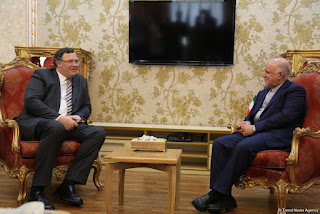Iran Plans To Drastically Raise Fuel Prices, With Risk Of Higher Inflation
The Iranian government has proposed to increase the gasoline price by 50% to 15,000 rials per liter (around 43 US cents or $1.62 per US gallon) in the budget bill for next fiscal year, starting on March 21. The price of diesel is also set to increase by 33% to 4,000 rials per liter, or 10 cents per liter or 38 cents per gallon. According to a report published on December 19, on the official government website, the rise in fuel prices would add $4.8 billion to the government’s revenues next year to help it invest in job creation, to reduce Iran’s high unemployment rate. The report also says raising fuel prices to a more realistic level will reduce gasoline and diesel smuggling to neighboring countries, where the prices are much higher. The fuel price hike will come into force once the parliament and the Guardian Council approve it. Fuel prices, like many other necessities, have been heavily subsidized in the Islamic Republic’s closed and controlled economy. Also, hundreds of...

